Determining the type of feeding a dog is an important and crucial point. After all, it is precisely on how correctly it will be selected and balanced that the health, well-being, appearance and life expectancy of the pet will directly depend. At present, it is possible to feed animals with both ready-made food, in a predominantly dry form, as well as natural, self-made. Here with the features of each type of food, their examples, pluses and minuses we will analyze in this article.
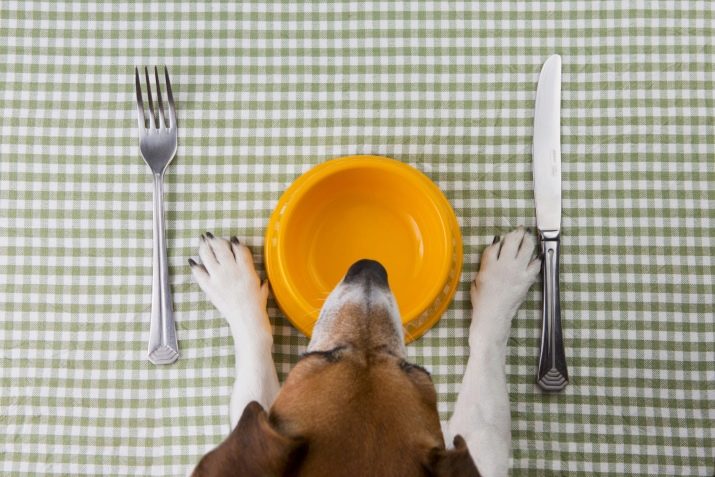
Natural products
Recently, an increasing number of dog breeders believe that if an animal eats natural food, that is, prepared by its owner at home, then it grows strong, powerful and healthy. This statement is quite controversial. However, it is precisely proven that properly balanced natural nutrition allows you to grow a truly healthy pet. But for this it is necessary to know exactly what products, nutrients and trace elements the dog needs.
This is the only way at home to cook fully balanced feed that is not inferior in anything to industrial feed of high quality.

Allowable Food
All food products of these animals are divided into several groups, depending on which particular substances and vitamins they contain in the highest concentration.
Protein
This is the main element of nutrition, it is he who is responsible for the normal growth and division of cells, and, therefore, for the normal growth, development of the dog and its set of muscle tissue. Moreover, protein is the only substance that does not have a cumulative effect. That is, it must be present in the diet of the animal constantly.

Several substances are the main suppliers of protein.
- Dairy and dairy products. It is not only a source of protein, but also beneficial food bacteria. At the same time, sour milk should be present in the pet's diet from the moment it is 6 months old until the very last days of life. Whole milk is used for cooking cereals intended for feeding puppies up to two months of age, as well as pregnant and lactating bitches.
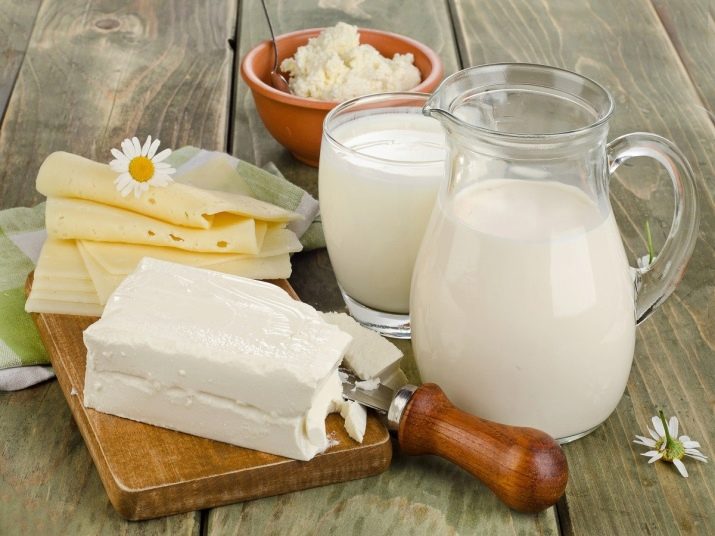
- Powdered milk it is permissible to use no more than 2 times in 10 days and in small quantities. And also you should know that at one meal it is forbidden to feed the dog with milk and meat products at the same time (we are talking only about whole milk). The fat content of whole dairy products should not be lower than 7 and above 12%. If home products are used, then they must undergo a veterinary examination. Otherwise, instead of the benefits of natural nutrition, the animal will be brought one harm.
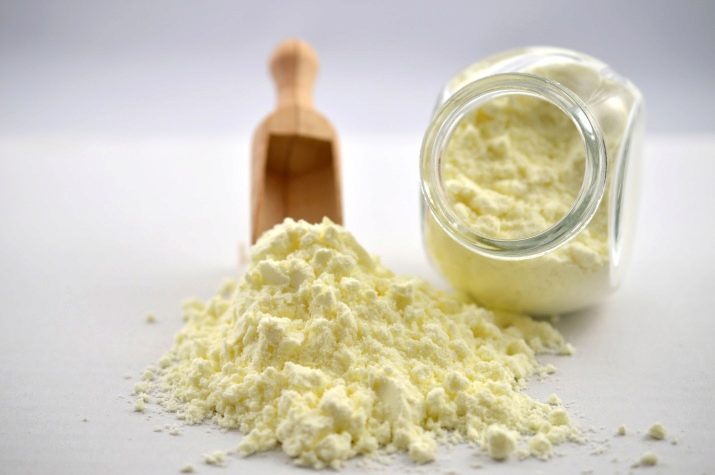
- The eggs. This product is not only a storehouse of protein, but also saturates the body with vitamins such as E, B2, B12, D. And they also contain a large number of useful polyunsaturated amino acids. But per week, adult dogs are recommended to include them in the diet no more than twice. The maximum daily amount is 3 eggs. Nursing dogs, puppies, animals after illness or surgery should replace chicken eggs in the diet with quail. They are given fresh or boiled.
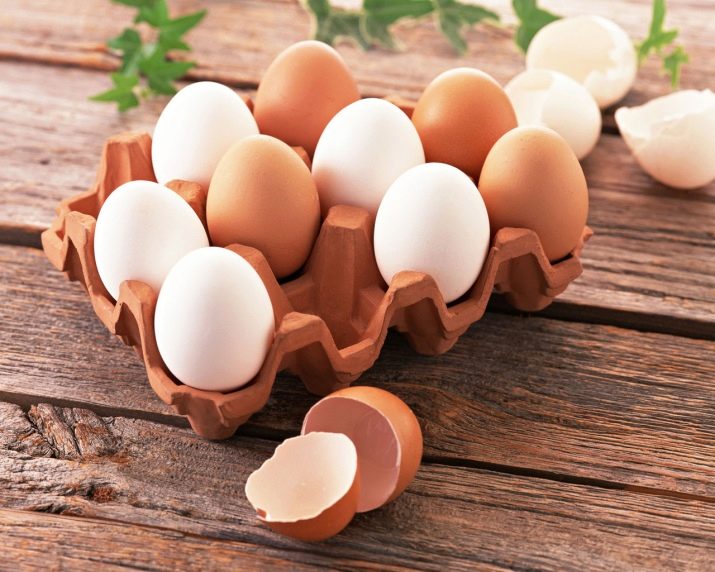
- Meat, fish and offal. They are the main source of protein for dogs, their mass fraction in the pet's diet can reach 50%. Fish can be given 2 times a week, the calculation is simple - 5 g of this product should be per 1 kg of animal weight. Sea species of fish can be given in raw form, river ones - only after prolonged and obligatory heat treatment. If possible, fish bones should be removed, especially if the food is prepared for puppies. But the broth or juice remaining after cooking, you should safely add to the rest of the products that make up the porridge.
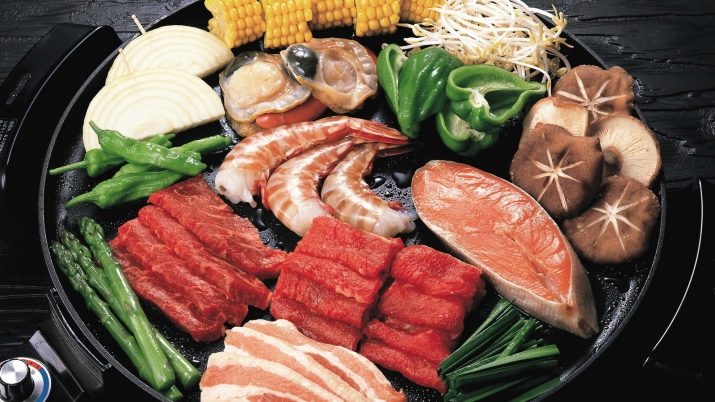
- Offal usually included in the menu once a week. This group includes the heart, trachea, liver, kidneys, lungs, scar. They are given both in raw finely ground form and after they undergo heat treatment. The main source of protein is meat. Preference should be given to beef, lean pork, rabbit meat and poultry. It is acceptable to use bone or meat and bone mince, but only after heat treatment.

Meat can be given both raw and boiled.
- Bones, only moslaks are allowed (for brushing the dog’s teeth), as well as spongy or porous. Tubular and costal bones are potentially highly hazardous to the animal; they cannot be included in the diet even in baked or boiled form. It is permissible to use them for cooking porridge broth. But for normal growth and development, the dog body needs not a single protein, but also other nutrients.
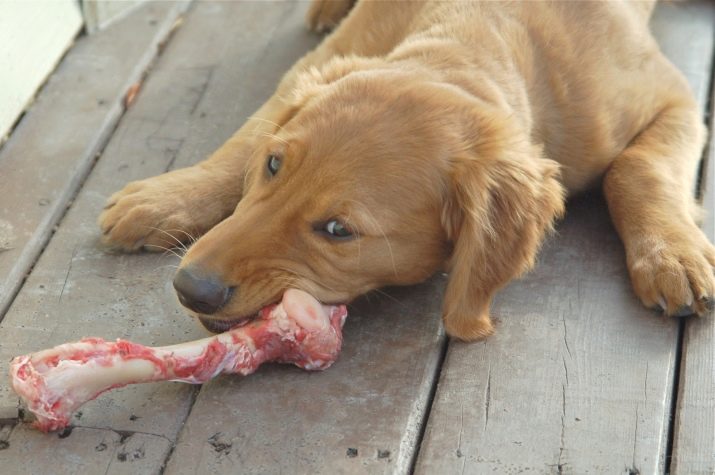
Carbohydrates
They are the main source of energy of the animal, and also saturate its body with fiber, which is necessary for normal intestinal motility. As their main source are cereals. The exact list of cereals should be determined by the veterinarian depending on the age, breed and health status of the animal. However, pearl barley, millet and corn grits should be absent.
Most carbohydrates should come from cereals such as buckwheat, unpolished rice, wheat or barley porridge. They are cooked mainly in water. In cases of feeding puppies or pregnant and lactating bitches, their boiling in milk is allowed.
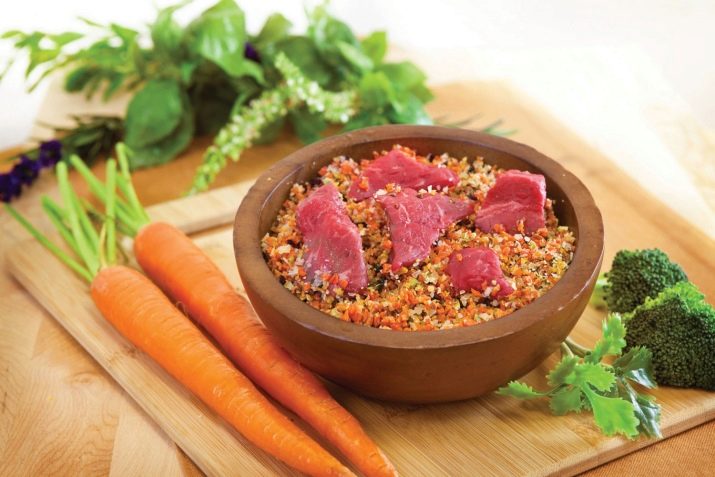
Vitamins and Minerals
They must be regularly present in the diet of dogs.Some of them enter the body in the form of vegetables and fruits, in raw or boiled form (these products are also a source of healthy carbohydrates). But getting a daily norm of vitamins and minerals from them is quite difficult, therefore in addition, it is necessary to purchase special complexes of these substances if the animal is on a completely natural diet.
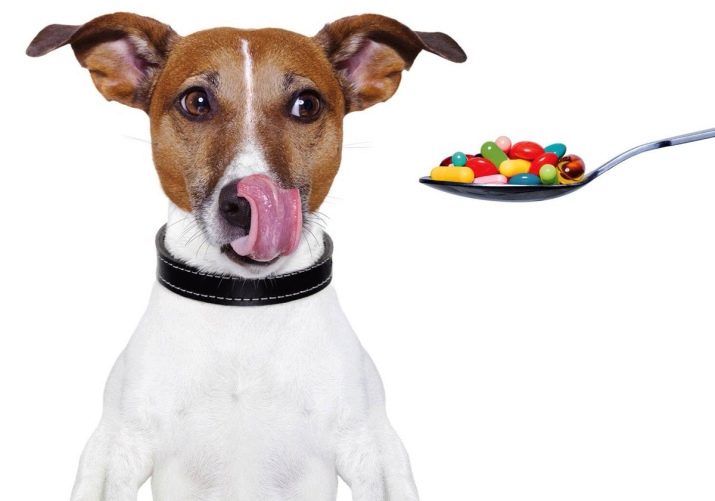
Fats
It is important to understand that everything should be in moderation, so the food should not be very greasy, not dietary. On average, 10 grams of fat is needed per dog meal. Their source is fish oil, vegetable oil of all kinds, and sometimes you can also use good quality butter in small quantities.

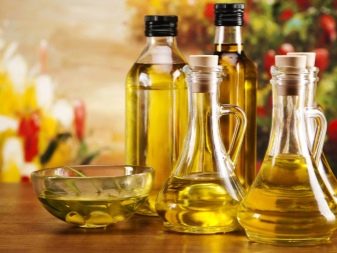
Important! Having studied this list, it becomes clear that preparing a balanced dog food at home is possible only using a wide range of products. They should be as natural and useful as possible.
What should not be given?
In addition to the list of necessary ingredients, there is a list of prohibited products.
- Macaroni and white bread. These products do not carry any benefit in themselves and, in fact, are a source of fast carbohydrates, which lead to obstruction of the intestines, as well as the rapid weight gain of the dog.
- Fatty pork, lamb and fat are also banned. These types of meat are difficult to digest by animals, and lard is generally pure fat.
- Spices and salt. Spices are foreign to the canine organism and often cause allergies. Salt is a dubious product, recently veterinarians recommend completely abandoning it.
- Sweets - These are carbohydrates that do not carry in themselves absolutely no benefit. In addition, they harm the teeth of the animal and upset the work of its digestive tract.
Important! Professional dog breeders and veterinarians recommend completely excluding any legumes, barley and oats from the menu.

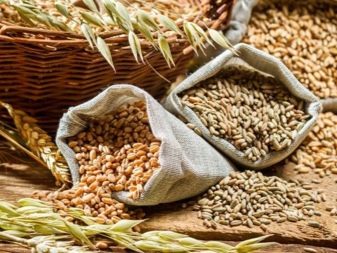
These products complicate the digestion process and cause bloating of dogs. In addition, they simply are not absorbed and are not digested by the body of pets.
Selection and review of finished feed
Preparing a complete dog food with your own hands is a difficult, troublesome and time-consuming task. It is much easier to purchase a ready-to-use special mixture for feeding a pet. But here it is necessary to observe the following nuances:
- it is worth choosing feed only from trusted manufacturers; It’s worth giving up budget options;
- feed should be used in strict accordance with the manufacturer's recommendations;
- for each breed of dog, its size and state of health should choose a special diet;
- it is necessary to carefully study the composition of the feed; it should not contain ingredients such as flour, feathers, offal, preservatives and dyes.
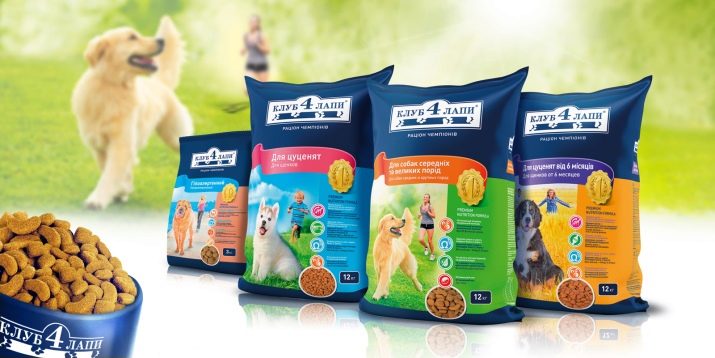
Important! Each pack indicates whether the food is intended for daily use, whether it is medicinal or special, for example, diet.
If a decision is made to feed an animal with dry industrial food, then first of all attention should be paid to products from several manufacturers.
- Wolfsblut - This is a German brand product belonging to the category of holistic. The assortment includes products with various meat and fish tastes. There are feed intended for the diet of animals. The percentage of meat is not less than 30 units. There are no harmful additives and preservatives in the composition, the granule size is average. All ingredients have passed the most stringent quality control.
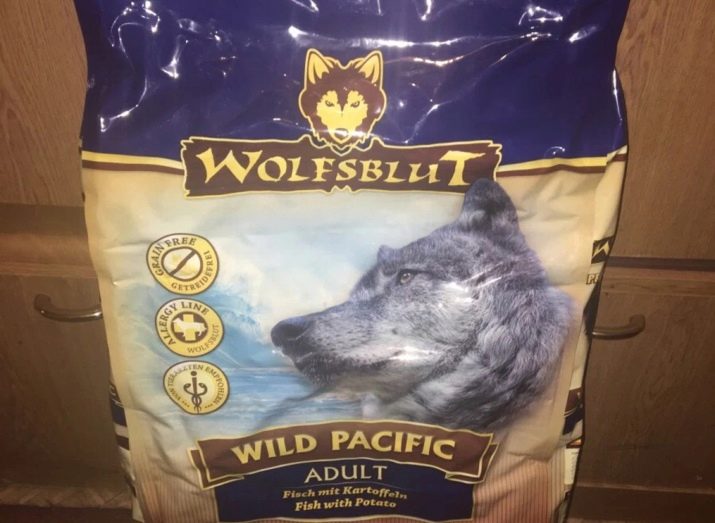
- Brit Care Adult Large Breed - This is a food designed specifically for large animals. The composition is balanced, a wide selection of food with different tastes. The food belongs to the hypoallergenic category, it contains not only fruits and vegetables, but also special additives that help protect the pet from joint diseases.

- Probalance - This is a domestic brand.A big plus of the feed is the presence in the composition of natural meat, not meat flour. Affordable price, natural and safe composition. A big plus is the presence of an enhanced vitamin complex in the composition.
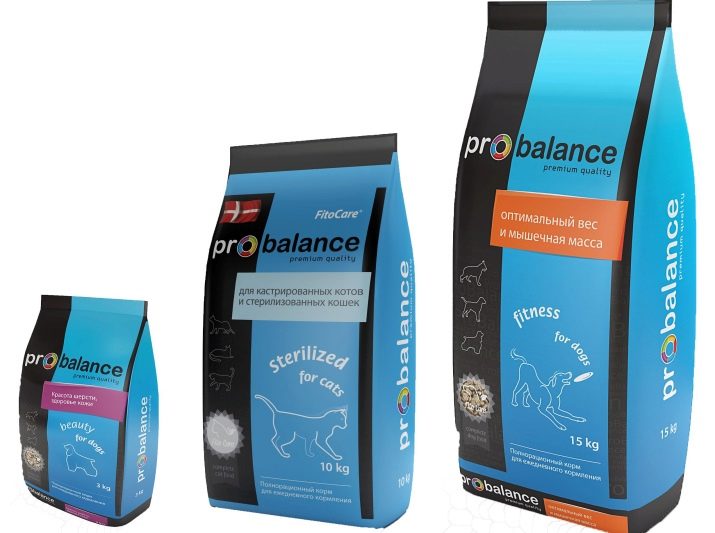
- Acana - This is a wide selection of various dry and even wet food for dogs of various sizes and breeds. The visiting card of the producer is the presence of meat in the amount of 50% of the total mass of the product. There are no flavors or preservatives. The feed consumption is economical, but the animal receives absolutely all the necessary substances.
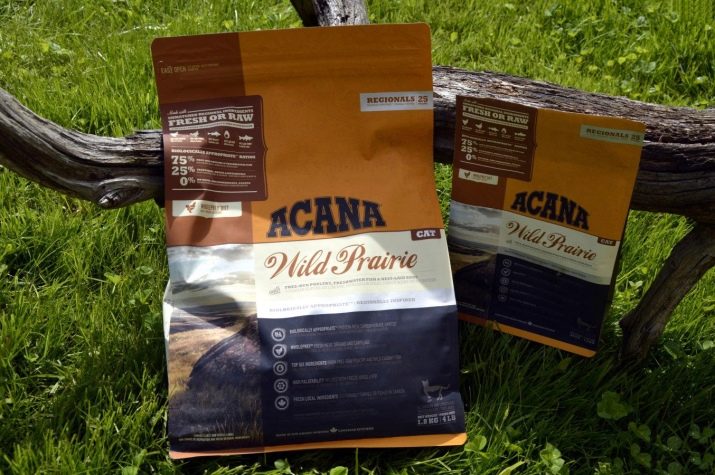
- Almo nature Is an Italian manufacturer. In his feed line he presents products for dogs of all ages and sizes. The composition is perfectly balanced, natural and safe. The food belongs to the premium category, although some breeders have already attributed it to holistic.
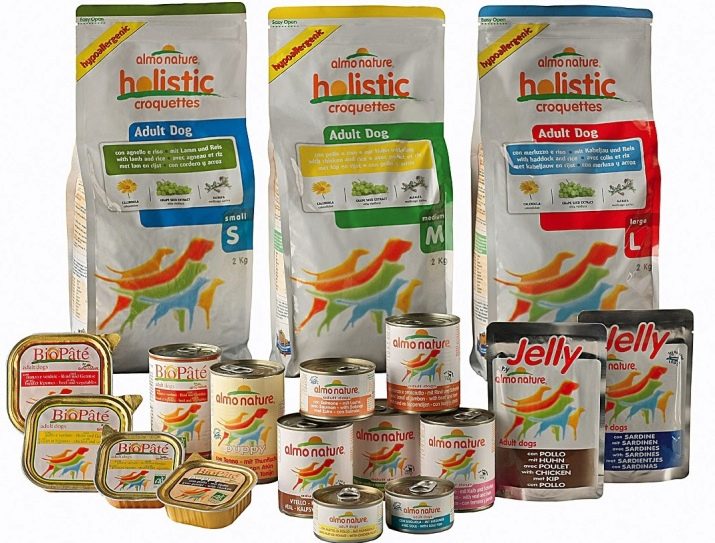
- Happy dog In the lineup of this manufacturer, not only standard feeds are presented, but also medicinal, dietary, as well as suitable for animals of all ages and sizes. As with previous manufacturers, the feed of this manufacturer is balanced, having proven in practice its high quality and natural ingredients.
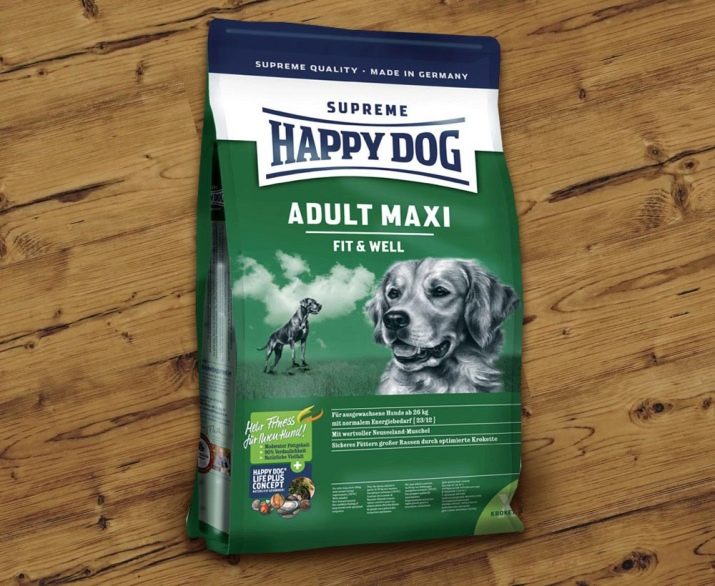
Important! But regardless of whether the animal will be fed natural domestic food or dry industrial, it is necessary to carry out the procedure itself correctly. Otherwise, even a perfectly designed balanced menu will not benefit the dog.
Nutrition Rules for Adult Dogs
The first thing you should definitely pay attention to is the feeding mode. Manufacturers of dry dog food indicate the frequency of feeding and the amount of servings on the package.
It should be understood that if large dogs exceed the permissible rate of growth and weight of their group, then the portion size should be slightly larger.
On average, adult healthy dogs are fed as follows:
- frequency of feeding - twice a day at the same time;
- portion size averages 5–7% of the total weight of the animal;
- eating should be done at least one hour before walking and at least two hours before bedtime;
- if one of the meals was skipped, then the next time the portion size cannot be increased.

Important! It is very important to remember about clean water. The animal must have constant free access to it, regardless of whether it eats dry or natural food.
If the dog is old, then the conditions and diet vary slightly, namely:
- dry food should be specifically designed for older dogs; granules in it have a more suitable size and level of hardness, the composition is slightly different than that of nutrition for young dogs;
- if the nutrition is natural, then in it the volume of cereals should be reduced, as well as bones; but the proportion of cooked vegetables and meat that have undergone heat treatment, on the contrary, is increasing;
- the frequency of food intake can be increased up to three times a day, while the volume of a single serving reduces up to 3% of the weight of the dog itself.
Important! The time of feeding the animal daily should be the same. For example, at 7 a.m. and 7 p.m. for young dogs and 7 a.m., 12 p.m. and 7 p.m. for elderly dogs.
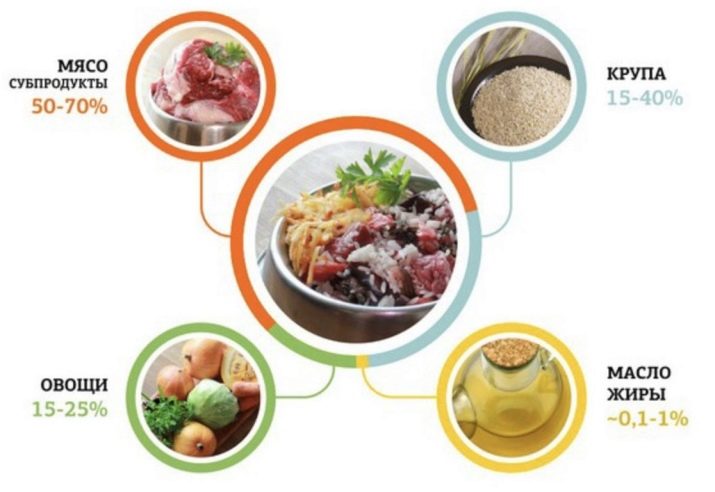
In addition, in old dogs, natural nutrition should be quite liquid and include a large percentage of water, and the food itself should be as chopped as possible, almost grated into a homogeneous puree.
How to feed sterilized and neutered dogs?
If before the operation the animal ate normal dry food, then after sterilization and castration it must be transferred to a special diet for such dogs. The best option is the products of the same manufacturer whose feed the dog used before. Frequency of feeding is still 2-3 times a day. Serving size should be indicated directly by the manufacturer on the package, depending on the age, size and weight of the animal.
If the animal was on natural nutrition before the abdominal surgery, then even after surgery it can be left unchanged. True, something will have to change in the menu itself.
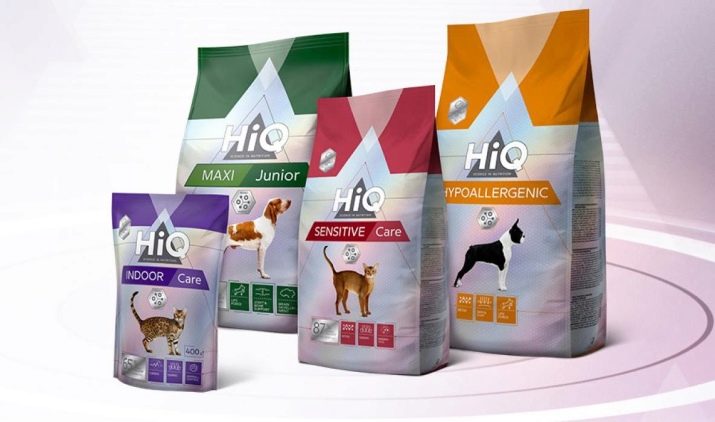
Nutrition of sterilized bitches
Such dogs are strictly forbidden to give boiled meat of any kind, sweets (even fruits with high sugar content) and white bread. These products should disappear from the animal’s menu forever and not appear in it as even extremely rare exceptions.
About 1 time per week, the usual evening diet should be changed to a serving of any dairy product. It can be kefir or ryazhenka. And for greater satiety of the dog, they should be pre-mixed with a small amount of low-fat cottage cheese. Such a change will help to facilitate the work of the gastrointestinal tract and normalize its activity as a whole.
The main source of carbohydrates and fiber will now be boiled oats and buckwheat. They are mixed with raw meat, vegetables and a minimum amount of vegetable oils.
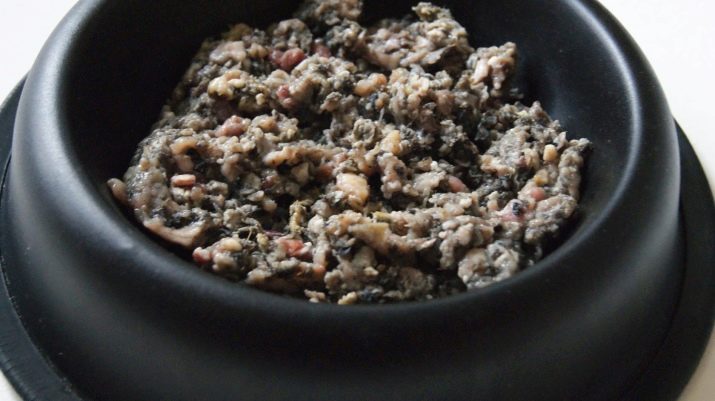
Even if other types of cereals were included in the diet of the bough before surgery, the veterinarian should determine the appropriateness of their use. Therefore, the owner of the animal must definitely clarify this question with him.
Diet of castrated males
But castration has a much greater effect on male dogs, since their hormonal background changes quite a lot. Therefore, to maintain the health of the pet, it is necessary to make the following significant changes in its diet:
- in the first few weeks after surgery, the food should be as soft as possible, chopped and with a high liquid content;
- the frequency of feeding can be increased up to three times a day;
- the average calorie intake is reduced by 25%, especially with regard to the use of fats;
- the main source of carbohydrates is oatmeal boiled in water, but not instant cooking;
- in the role of fats, it is allowed to use sunflower olive or pumpkin oil;
- the source of protein is finely ground raw meat, once every 10 days it is allowed to give raw offal, every 7 days one of the meals may consist of raw sea fish;
- from vegetables, carrots, zucchini and zucchini are allowed; of fruits, only apples of unsweetened varieties can be used and not more than 1 time per week.
Over the past few years, veterinarians and experienced breeders have said that It is easier to keep sterilized dogs on natural food than castrated dogs.
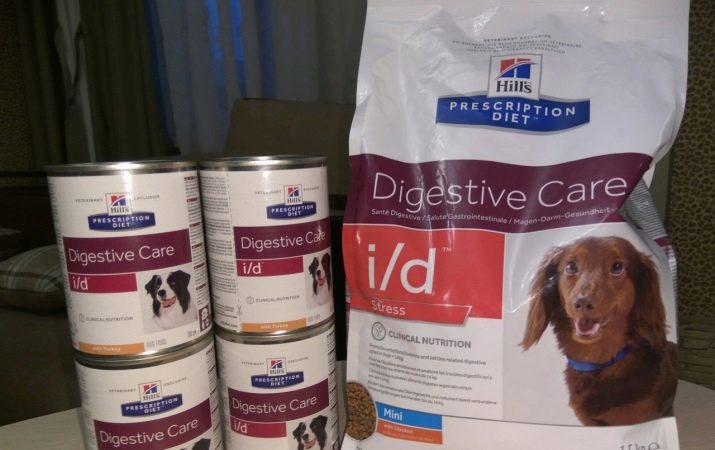
Therefore, many experts still recommend transferring dogs to special dry food intended for neutered animals. Moreover, in the first days after the operation, the granules are soaked in a small amount of sour-milk products, and within 5-7 days the animal is completely transferred to dry food.
Features of feeding puppies
Their health in the future directly depends on the right diet for newly born puppies. If you plan to feed the dog only dry food, then first, as a complementary food, use semi-liquid prepared mixtures with pieces of solid food. Within 1-3 weeks, puppies are completely transferred to dry food. Feed them extra straight strictly prohibited.
In this case, the optimal food option is the choice of ready-made food, intended not only for a specific age group of the animal, but also for a particular breed of dog.
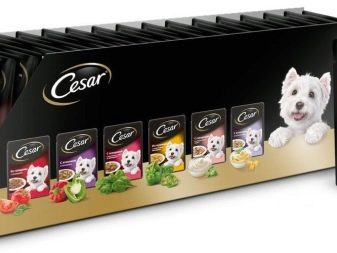

In such mixtures, the manufacturer has foreseen all the needs of the pet's body in advance.
If it is planned to carry out natural feeding, then special attention should be paid to the following:
- the density of portions and their calorie content directly depend on factors such as weather conditions - in cold weather, most of the energy is spent on heating the animal, therefore, the fat content of the food should be slightly higher than normal; in heat, on the contrary, the feed should be less high-calorie and more liquid;
- the frequency of feeding puppies is 3-5 times a day; the older the animal becomes, the less often it is fed and the larger a portion is placed at one meal; if within 20 minutes the bowl of food does not empty, it is removed until the next feeding;
- puppies under the age of 4 months should be fed for 45 minutes after a walk, which will help them relax faster and recover.
If the result obtained corresponds to the norm, according to the breed, then corrections are not needed.

During the first months of life of puppies, the basis of their diet is milk porridge, boiled and raw meat, offal in large quantities. The older the animal becomes, the greater the proportion of vegetables and sources of protein in the menu, the smaller - fats and simple carbohydrates. There is no enormous difference between the results of natural feeding of dogs and the use of industrial feeds, but subject to all the subtleties and recommendations, as well as the proper preparation of the diet.
See how to feed your dog.








































